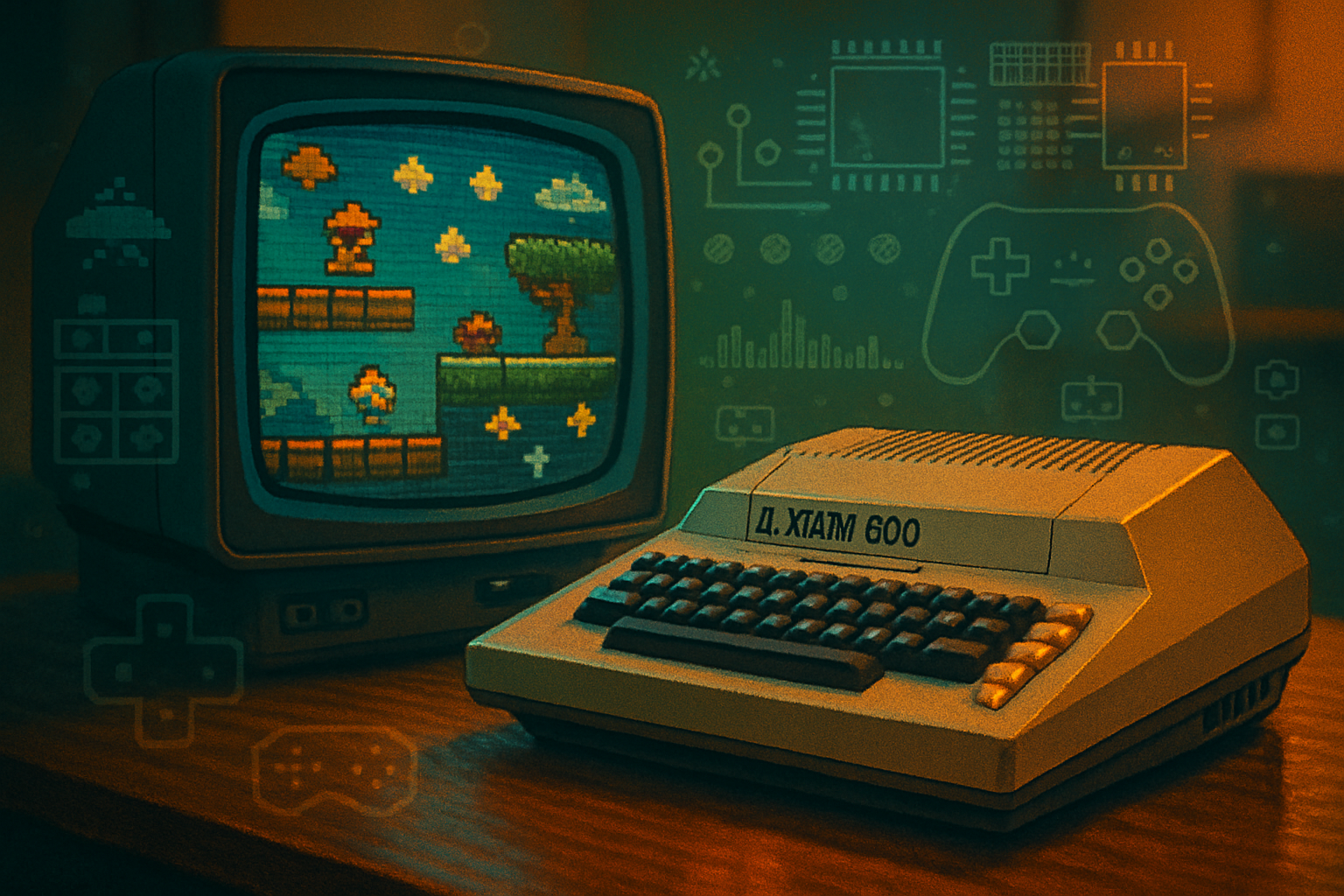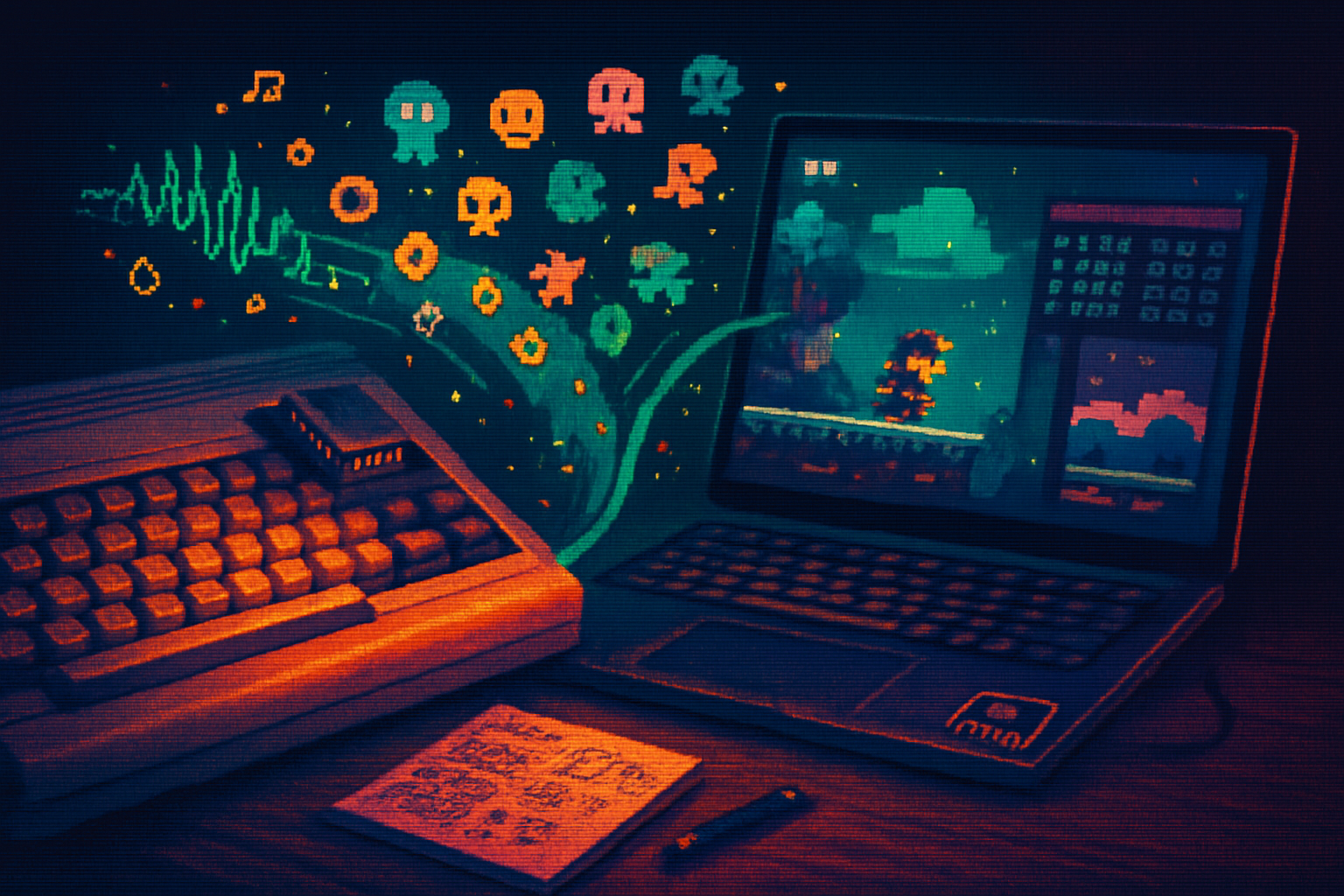· 6 min read
From Pixels to Polygons: The Evolution of Retro PC Games
A deep look at how graphics in PC games evolved from blocky pixels and limited palettes to textured polygons and stylized low-poly art - and what that history means for today's games and creators.
Introduction
PC games didn’t start with photorealism. They started with constraints: limited colors, tiny resolutions, and hardware that begged for cleverness. Those constraints didn’t just make things harder - they defined distinct artistic languages that still resonate today. This article traces the visual journey from early pixel and text-based displays through the first polygonal experiments to the contemporary retro revival, examining the technological shifts and the artistic decisions those shifts enabled.
The Age of the Pixel: Constraints Breed Style (1970s–late 1980s)
Early PC visuals were built from pixels and characters. Many early titles used ASCII or simple character sets to represent levels and monsters (see the history of Rogue and roguelikes) [https://en.wikipedia.org/wiki/Roguelike]. The visual vocabulary was functional: convey game state clearly with the fewest resources.
As graphics adapters evolved, so did the palette and resolution limits. The IBM Color Graphics Adapter (CGA) offered a few colors, then EGA expanded the palette, and VGA (introduced in 1987) brought 256-color modes that let artists push toward more detailed art and richer scenes [https://en.wikipedia.org/wiki/Color_Graphics_Adapter] [https://en.wikipedia.org/wiki/Video_Graphics_Array].
This period produced iconic pixel-art aesthetics. Games like King’s Quest and Ultima used carefully arranged pixels to suggest texture, light and personality. Animators and artists developed techniques-dithering, palette cycling, silhouette clarity-to get the most out of a handful of colors. Pixel art’s emphasis on readability and economy made it both an art form and a practical engineering solution.
High-Fidelity Bitmaps and the Adventure Boom (late 1980s–early 1990s)
With VGA and faster floppy/hard drives, adventure and role-playing games could ship with hand-drawn backgrounds and bigger sprites. Sierra’s AGI/SCI engine and LucasArts’ SCUMM facilitated storytelling-led games with lush VGA art (e.g., Monkey Island, King’s Quest VI) [https://en.wikipedia.org/wiki/Sierra_Entertainment] [https://en.wikipedia.org/wiki/LucasArts]. Artists had room to refine facial expressions, environment details, and cinematic framing while still operating within palette limits and low resolutions.
This era also saw experimentation with more fluid animation. Prince of Persia (1989) used rotoscoped animation to achieve lifelike motion despite low resolution, demonstrating that technique could compensate for limited pixel counts.
The Dawn of 3D: Raycasting and Pre-Polygon Tricks (early 1990s)
The jump from 2D to 3D wasn’t instant. Early “3D” PC shooters like Wolfenstein 3D (1992) used raycasting to produce a convincing first-person view without rendering full 3D geometry [https://en.wikipedia.org/wiki/Wolfenstein_3D]. Doom (1993) improved on that with more flexible level architecture, lighting tricks, and textured walls that suggested depth and atmosphere [https://en.wikipedia.org/wiki/Doom_(1993_video_game)]. These games relied on smart engine design and sprite art to bridge the gap between pixel art and fully polygonal worlds.
Full Polygons and the Real-Time 3D Revolution (mid–late 1990s)
Quake (1996) and subsequent engines introduced real-time, true 3D polygonal rendering with perspective-correct texture mapping, lighting, and more complex geometry [https://en.wikipedia.org/wiki/Quake_(video_game)]. The arrival of consumer 3D accelerator cards, especially 3dfx’s Voodoo series, turbocharged the move toward textured polygons and new shading techniques [https://en.wikipedia.org/wiki/3dfx].
Artists learned a new grammar. Instead of hand-placed pixels, they modeled meshes, unwrapped UV maps, and painted textures. This allowed for dynamic camera movement, complex spatial puzzles, and increasingly realistic environments. But early polygonal graphics often looked blocky or low-resolution by today’s standards-”low-poly” geometry and blurry textures were common. The visual shift was less about immediate photorealism and more about spatial freedom and interactive camera work.
The Look Evolves: From Realism to Style (2000s–present)
As GPUs and authoring tools matured, rendering approaches diversified. Photorealism became a goal for some studios, while others embraced stylization. Key trends included:
- Texture realism - higher-resolution textures, normal maps and later PBR (physically-based rendering) gave surfaces convincing material qualities.
- Shader-driven effects - per-pixel lighting, reflections, and post-processing moved beyond what’s possible with simple textures.
- Low-poly revival - deliberately simplified geometry with strong color palettes became an aesthetic choice rather than a limitation.
Indie games in particular reignited interest in retro aesthetics. Pixel-art indie hits like Stardew Valley and Celeste and retro-inspired 3D titles like Monument Valley show that restraint can be an intentional, expressive design choice. Return of the Obra Dinn blends low-color palettes and precise 1-bit rendering with modern 3D interrogation to create something new from old techniques [https://en.wikipedia.org/wiki/Return_of_the_Obra_Dinn].
Tools, Emulation, and Preservation
Preservation and access shaped how retro graphics are consumed today. Emulators like DOSBox let new audiences run old titles on modern hardware [https://www.dosbox.com/], while digital storefronts such as GOG restore and republish classic PC games for contemporary systems [https://www.gog.com/]. Meanwhile, modern tools-Unity, Godot, Aseprite, PICO-8-make it easier than ever to create pixel or low-poly visuals and to emulate classic display behaviors (scanlines, palette limits, CRT curvature) [https://www.lexaloffle.com/pico-8.php].
Why the Past Matters to Today’s Artists and Players
- Constraints are creative engines. Historically, hardware limits forced artists to prioritize silhouette, readability, and composition-skills that remain crucial in UI/UX and game design.
- Style vs. fidelity. Modern hardware removes some limits, but many developers choose retro aesthetics for their clarity, nostalgia, and distinct identity.
- Hybrid approaches flourish. Contemporary games often combine pixel art, polygonal geometry, and advanced lighting to create unique looks that reference the past while leveraging modern capabilities.
The Cultural Legacy: Nostalgia, Accessibility, and Identity
Retro visuals are not just a nostalgic wink; they form part of a cultural language. Pixel and low-poly aesthetics signal a game’s design values: simplicity, focus on mechanics, or an homage to earlier eras. Because these styles are accessible to smaller teams, they also democratize game creation-visual polish can be achieved without huge budgets.
Meanwhile, modding, remasters, and shaders keep classic titles alive. Community-made filters (CRT shaders, upscalers like hq2x/4x) allow players to experience old games either as they were or refreshed for modern displays.
Conclusion: From Limitations to Choices
The arc from pixels to polygons is a story of shifting constraints and expanding choices. Early PC artists turned scarcity into style; later generations turned new tools into new possibilities. Today, developers can choose any aesthetic-pixel-perfect 2D, photoreal 3D, or stylized low-poly-because history taught them how to make expressive games both with and without technical abundance.
The past is not a series of relics to be mimicked. It’s a toolbox of techniques, sensibilities, and lessons about communication and economy. Whether you’re an artist aiming for retro charm or a player chasing nostalgia, the evolution of PC graphics reminds us that good visuals come from intentional choices as much as from technical prowess.
References
- VGA / CGA / EGA history - [
- Roguelikes - [
- Sierra and LucasArts - [
- Wolfenstein 3D, Doom - [
- Quake - [
- 3dfx - [
- Return of the Obra Dinn - [
- DOSBox - [
- GOG - [
- PICO-8 - [



